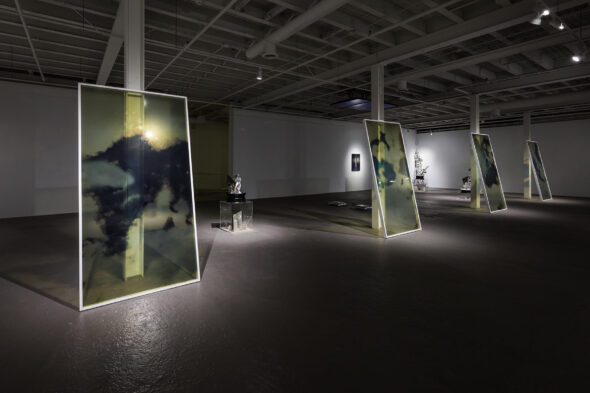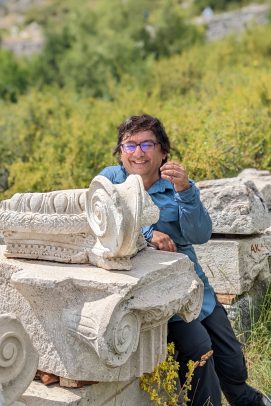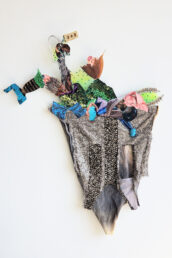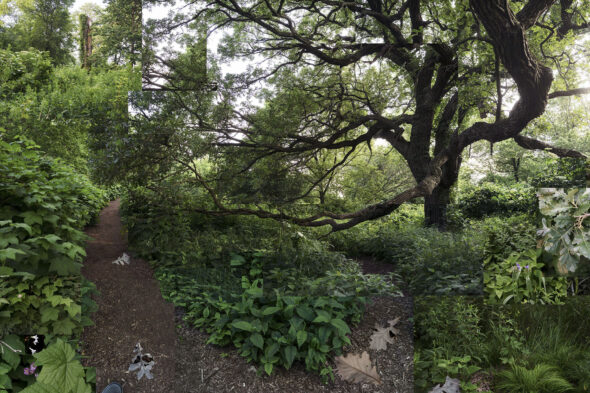UIC awarded NEH grant for sustainable exhibition spaces

The University of Illinois Chicago’s School of Art and Art History in the College of Architecture, Design, and the Arts has received a $180,000 grant from the National Endowment for the Humanities to study how Gallery 400 and the Jane Addams Hull-House Museum can be more environmentally sustainable.
The two-year grant, Climate Smart Humanities Organizations, also is supporting a group exhibition at Galley 400, “Earthly Visions: Inside the Climate Crisis,” which runs until Dec. 16. The grant is part of a larger NEH initiative focusing on sustainable climate initiatives.
Ömür Harmanşah, director of UIC’s School of Art and Art History, is the principal investigator on the grant. UIC is one of only six institutions to receive the award, which was issued for the first time in August.
Harmanşah said the grant helps fund strategic planning and facilities to help humanities organizations become climate resilient and focus on long-term strategic planning. The grant requires UIC to raise a 1-to-1 match from nonfederal third-party funds, which would boost the dollar amount to $360,000. The school will prepare a plan for architectural and infrastructural interventions that will help achieve net zero greenhouse gas emissions and that will align with UIC’s campuswide Climate Action Implementation Plan.
UIC’s carbon impact
In his application, Harmanşah focused on creating energy assessments for Gallery 400 and the Jane Addams Hull-House Museum, which are the two public-facing exhibition spaces where environmental humanities-related work is exhibited. The grant also will support programs and initiatives on environmental and climate justice.
The Jane Addams Hull-House Museum is a historic building on UIC’s campus, with 5,500 artifacts in its collections, located in two of the original settlement house buildings — the Hull Home, a National Historic Landmark, and the Residents’ Dining Hall, an Arts and Crafts building that has welcomed some of the world’s most important thinkers, artists and activists. Gallery 400 is a noncollecting contemporary art gallery housed on the first floor of Art and Exhibition Hall, a renovated five-story warehouse building. As a result, they have different infrastructural requirements and exhibition spaces.
“The idea is to get energy assessments to find what is the carbon impact of these spaces because they are visited by the public and to learn how they can be made more climate friendly and climate resilient in the long term,” he said.
In addition to working with the two spaces, Harmanşah also has joined with UIC’s Office of Planning, Sustainability and Project Management to ensure the efforts align with UIC’s climate plan.
The work will be conducted in four phases, beginning with the creation of a steering committee and culminating in May 2025 with the presentation of a final report. Harmanşah said he will apply for additional funding to pay for the implementation of the results.
As part of the efforts, Harmanşah will launch and teach a new undergraduate course this spring in the School of Art and Art History focusing on world architecture, climate and ecology. In addition, a climate action week with the UIC community will be held to present preliminary energy and climate-related reports as well as a public workshop on climate action and climate justice at UIC.
Artists take on climate
Currently, the “Earthly Visions: Inside the Climate Crisis” exhibition is focusing on the issues related to climate change. The exhibit includes works by local, national and international artists whose focus is depicting how we understand and respond to the climate crisis.
“This year’s unusual and extreme weather events have made the climate crisis more immediately palpable,” according to Denny Mwaura, Gallery 400 assistant director. “’Earthly Visions’ offers an opportunity to contemplate small and large ways to both take action and rethink what that action entails.”
The eight artists in “Earthly Visions” employ photography, prints, sculpture, video and installation to visualize scientific solutions, reconceptualize caretaking, document inventive activism and explore material alternatives to carbon-based substances.
“Our students are really big climate advocates,” Harmanşah said. “There is a great interest from the current generation about climate change and what needs to be done.”



